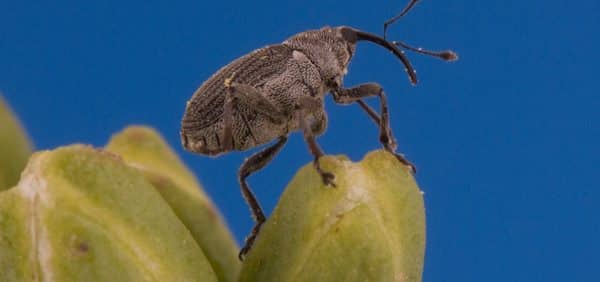Pea leaf weevil can be found in canola even though — as its name suggests — it prefers peas. However, this weevil is not known to cause an economic level of damage in canola. The weevil that matters in canola is cabbage seedpod weevil. Here’s how to tell them apart:
Cabbage seedpod weevil. They are grey and about 3mm long. They have a long nose, which distinguishes it as a weevil.
Cabbage seedpod weevils have chewing mouthparts so their damage appears as small holes chewed into the flower bud. Buds that are brown/yellow/white with no feeding wounds are not CSPW damage.
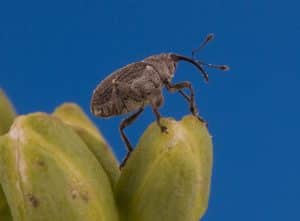
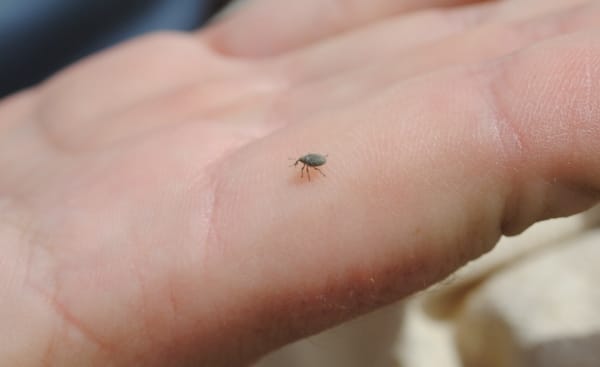
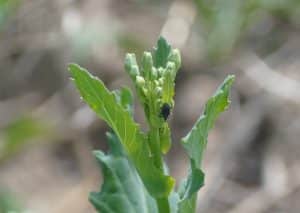
Pea leaf weevil. They are brown and up to 5mm long. The nose is blunt, not long like the cabbage seedpod weevil’s. Pea leaf weevils will chew leaves, but if you see a lot of leaf feeding in canola, the most likely culprit is cutworms — even if pea leaf weevils are present. Fields always host a wide range of insect species.
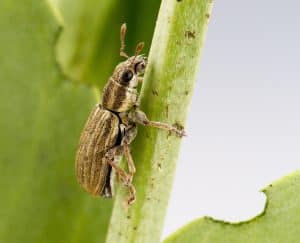
Report weevils. Alberta Insect Pest Monitoring Network at http://www1.agric.gov.ab.ca/$Department/deptdocs.nsf/All/prm13779 includes a form to report weevils here: http://www1.agric.gov.ab.ca/$Department/pestmon.nsf/WeevilWebSubmission
